Category: Safety & Security

When the check engine light comes on what do you do! The answer depends on several factors: firstly, is the light flashing? Secondly, is your vehicle running any differently? Thirdly, did you recently fill your tank with gas? What does number three have to do with anything? One of the most common codes tripped by the diagnostic system and stored in the onboard computer is “small evaporation leak.” This code is commonly caused by an improper gas cap seal or a broken gas cap. Therefore, tightening the gas cap will make the check engine light go out if this was the reason for the code.
Check Engine Light is Flashing
When the check engine light is flashing it is a sign of a significant issue. The flashing light is to gain your attention. Do not ignore this warning. The onboard computer is letting you know that something serious is wrong with the vehicle. Sometimes this will cause loss of power, known as “Limp Mode.” Limp mode is your vehicle protecting itself from severe damage. When this happens do not push your vehicle. If you are towing something, unhitch and slowly proceed to your mechanic or call a tow truck. It would be highly recommended to call the tow truck as any strain on the engine could cause more damage.
Issues that cause a flashing check engine light range from transmission issues to catalytic converter problems or failure. The most severe issue would be a total engine failure. Each issue puts you and your vehicle in danger, if you ignore the flashing red light on the dashboard. Therefore, in the case of a flashing check engine light, call the garage immediately. A certified mechanic can diagnose the problem with his OBDII scan tool. OBD stands for on board diagnostics tool, it communicates with your onboard computer where the codes have been stored.
There are many handheld OBDII tools available for personal use. A certified mechanic has thousands of dollars of diagnostic equipment plus their years of experience to assist them. Therefore, they are the best option for a flashing check engine light.
NOTE: If the check engine light is normally yellow but now is orange or red. The red is the same as a flashing check engine light. Not all vehicles display the same symbol. It is best to know by checking the owner’s manual for the current vehicle.
Is The Vehicle Running Differently
Is the vehicle running any differently? If the answer is no, set up an appointment to have the vehicle diagnosed. The mechanic will attach the code reader to the onboard computer via a port under the dashboard and retrieve the codes. Some of the most common codes are O2 sensor failure, Large Evap leak, misfires and MAF air flow sensor failure. Oftentimes the evaporation leaks will require a “smoke test” which is simply a smoke machine attached to the evaporator system and smoke blown through the tubes and connectors. Smoke will escape through any breaches in the system, alerting the mechanic to the precise location of the problem. Replacing the worn or broken parts will save money in fuel costs and help fix any performance problems.
If the answer is yes to the question, is the vehicle running any differently. Do not wait, call your mechanic immediately. This issue is more serious than a weak sensor or random misfires. It could be failed coils, wires, a transmission speed sensor or a MAF mass air flow sensor. A failed MAF sensor will dramatically influence performance and can cause more damage if not replaced.
Four Common Issues Explained
Four common components that cause most of the codes in a system are MAF sensor, O2 sensor, coil/wires and Evap system. Oftentimes codes are not singular but have two or more that surround a component. This is where the knowledge a certified mechanic has, comes in handy. Knowing how an engine works with all the components helps narrow the issue down for the mechanic. If the code is a singular code than more than likely that specified component has failed.
Mass Airflow Sensor
Mass Airflow Sensor (MAF) sits on the top of your engine between the air filter and the intake manifold. It measures the air flow going into the engine, relaying this information to the on-board computer (ECM) which in turns delivers the correct amount of fuel to the engine for peak performance. The ECM will also use the MAF readings to determine when the transmission shifts. If the MAF is not working properly it may cause the transmission to shift differently. MAF sensors can be contaminated with debris, water, or even packed with snow during a storm. Cleaning the MAF sensor is a delicate task and should only be done by a mechanic. The components are delicate. When the MAF sensor fails the engine might not start or start and instantly stall. Another issue will be poor acceleration and odd shifting patterns for the transmission.
Oxygen Sensor aka O2 Sensor
O2 sensors measure the amount of oxygen that is unburned in the exhaust/emissions system. They survive in temperatures over 800 degrees and tend to fail, on average, around 50,000 miles of use. Most newer cars have 4 oxygen sensors. They work together to monitor the emissions system for issues that will affect performance and emissions. If you need to pass an emissions test for inspection and your oxygen sensors are not working properly you will fail the inspection. Non-working sensors will cause increased emissions and lower performance in an engine.
Miss Fire Issue
Coil and wires are a common reason for a misfire code. Once these systems are compromised the only solution is to replace them. Misfiring can cause damage to the engine oftentimes catastrophic, if left unchecked. A misfire is when the fuel in a cylinder is left unburned or partially burnt. This will cause a hesitation in the running of the engine. There are other components in the system that can cause a misfire so it is best to have a mechanic diagnose the problem.
EVAP Leaks Large and Small
The EVAP system, or evaporation system, is the emissions control system. The EVAP system is a sealed system of lines, valves, connectors, and a gas cap. This system recirculates the gasoline vapors in the system thus preventing them from escaping into the atmosphere. When something goes wrong in the system it is categorized as a small or large EVAP leak. A sizable percentage of small EVAP leaks can be the result of a poorly seated gas cap. If removing the gas cap and installing it correctly does not fix the check engine light it could mean any one of the many parts of this system have failed. This will require a smoke test to determine which part or parts need to be replaced. If these parts are not replaced expect to lose fuel via evaporation and a constant check engine light on the dashboard.
Whether it is a common check engine light issue or a severe issue never ignore a check engine light on the dashboard. A check engine light is the vehicles computer or monitoring system alerting that something is not right. Taking care of a little issue now could save the engine from catastrophic failure. In other words, when the check engine light comes on call a garage and make an appointment for a proper diagnostic before it is too late and the engine is ruined. Having peace of mind is worth the trip to the mechanic.
6 Safe Driving Tips In Ellsworth Maine

Ellsworth is one of Maine’s fastest growing cities, with a land mass of over 79 square miles the potential for greater development is possible. Ellsworth has seen consistent growth and development over the last years.This progress has produced an increase in traffic and traffic related accidents. So how do you stay safe on Ellsworth’s streets and roads? Follow these six safe driving tips to avoid traffic accidents.
#1 Safe Driving Tip: Distracted Driving Numbers Rise
Stay alert, put away the distractions. Things like cell phones, umpiring the argument in the backseat, checking your hair or putting on makeup while driving, all lead to your attention being on something other than the road. Remain alert and aware of your surroundings at all times. If the distraction demands your attention, pull off the road, deal with the situation before you continue driving. Being distracted is the leading cause of traffic accidents.
#2 Safe Driving Tip: Safe Travel Distances
Space, space can save lives. Leaving enough room between your vehicle and the one in front of you can make a huge difference when avoiding a traffic accident. The average person requires 0.25 seconds to react to a situation. The few extra seconds of space between your vehicle and the one in front of you, allows you the time to react and avoid a collision.
#3 Safe Driving Tip: Looking Ahead
Looking ahead and not just at what’s immediately in front of you is a great defensive driving skill. Watch three or four cars ahead of you for telltale signs of brake lights or upcoming turns. Seeing the whole picture of what’s going on around you can help you make better driving decisions. This forewarning of traffic changes will help you safely navigate the roads.
#4 Safe Driving Tip: Enter and Exit Safely
When entering traffic flow or crossing lanes to exit the road, be aware of the speed vehicles are traveling. Allow enough time for you to enter or exit the highway safely without hesitation. When in doubt don’t pull out! Intersections create their own hazard zones. Expect the unexpected when approaching an intersection and slow down. Racing the yellow light to make it through the intersection can turn into a bad situation quickly.
#5 Safe Driving Tip: Safe Speed For Current Road Conditions
Speed plays an important role in safety. When the road conditions are less than optimal, slow down. Water, snow, wet leaves, dense fog and other road conditions warrant slowing your speed. Hydroplaning on a wet road can be avoided easily with a reduction in speed. No matter how good your tires are if you are going too fast on wet roads your tires will lose traction causing you to hydroplane out of control.
#6 Safe Driving Tip: Proper Two Way Turning Lane Usage
Ellsworth now has several two way turning lanes aka suicide lanes. These were designed to help traffic flow, they are not passing lanes. How do they work? When a motorist has to cross over the oncoming traffic lane they can safely move into the two way turning lane allowing the traffic behind them to continue and allowing them the freedom to wait for an appropriate break in the flow of oncoming traffic to cross safely. Using the lane inappropriately is dangerous. Not using this designated lane to turn but dashing across all the lanes can result in a collision. Using it to pass a slow motorist is an inappropriate use of the two way turn lane! If a motorist pulls into the lane and leaves the back half of their vehicle in the travel lane it becomes a huge target for an accident.
Proper Use of Two Way Turning Lane Explained
The proper way to use the two way turn lane is to turn into the lane before your exit point keeping all of your vehicle in the two way turning lane, allowing traffic to keep flowing on either side of your vehicle. This can help you when you need to cross a lane to enter traffic flow. First, pull across the first lane of traffic into the two way turn lane. Next, wait for a break to pull into the flow of the traffic headed in the direction you need to go. Therefore, saving you the time and risk of waiting for traffic to be clear in both directions then shooting across to the correct lane. In other words, if used properly the two way turn lane is the safest option for entering or exiting the road.
There are hundreds of scenarios that can arise on a drive from being caught in another driver’s blind spot during a lane change, to having the sun obliterate your vision. Each one has the potential to end in a collision. What you do and how you react will alter that possibility. Being alert at all times is your number one defense against a tragedy. Be aware of what is happening ahead of you on the road. Drive like everyone else on the road is on their maiden voyage with a learners permit. Becoming complacent and thinking everyone has driving skills and road manners like you do is a big mistake. Ellsworth is a fast growing community with increased traffic possibilities for years to come, so stay alert and be safe.
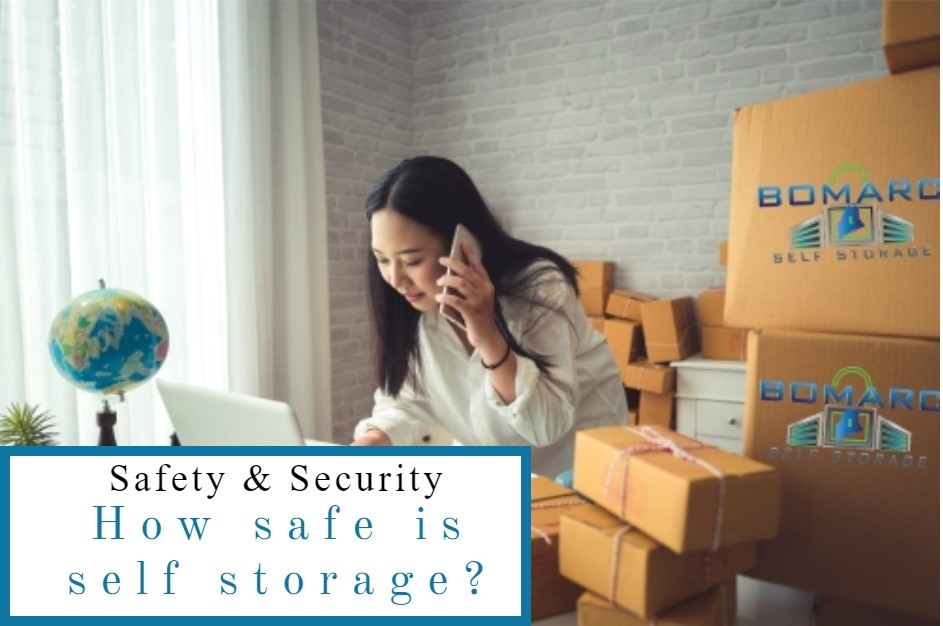
How safe are self storage units in Ellsworth, ME? Security is an important consideration when choosing a self storage unit. There are many factors affecting how safe a self storage facility can be. Most important are the measures the facility has in place and the things you can do to help secure your property while in storage. Ask about the security measures in place before you decide!
What Security Measures Are Already in Place?
We utilize each of the following security measures at our facility but what if we aren’t near you? Check out the security protocol the self storage facility has in place, oftentimes driving by will clue you in on some of the most obvious features such as security fence and gate, lighting and surveillance cameras. What about some of the other important factors such as secure key code entrance and staff that have your best interest as their top priority? This will require a call or a visit to ascertain.
Digital Surveillance:
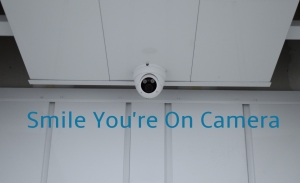
Digital surveillance offers the best quality picture over tape storage. A security camera records everything that happens 24 hours a day. They will record in low light and provide evidence if an incident does occur.
Gated Security:
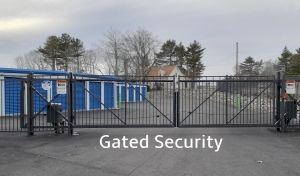
A security gate and fence is your first line of defense. A fence surrounds the facility and deters access from unwanted guests. Our gate is monitored day and night with a digital camera recording all activity around the gate.
Password Protected Entrance:

A good self storage facility will require each renter to have their individual secure pass code for entering the gate and any doors. These codes are unique to each user and provide an added layer of protection against unwanted visitors.
Lighting:
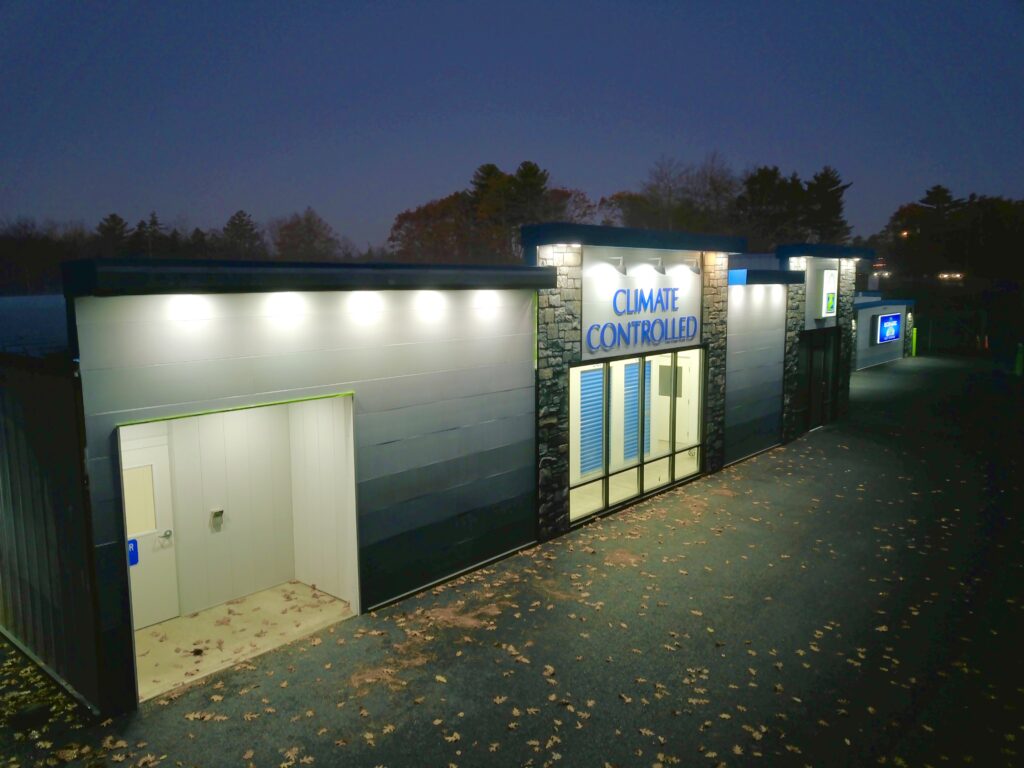
A well lit facility is a huge deterrent to criminal activity. Lighting throughout illuminates suspicious activity as well as brightens nighttime images on the video surveillance system. Lighting is very important to the overall security.
Staffing:
Onsite staffing is another layer of protection often overlooked. They monitor who goes in and out and look for unusual activity at the facility. They can be your eyes when you are not there. Walking throughout the self storage units inspecting locks and looking for evidence of tampering.
What Can You Do To Increase The Security Of Your Unit?
There are several things you can do to provide greater protection of your possessions while they are in self storage.
- Purchase a disc or cylinder lock. These locks afford the best protection because they are not easily snipped or cut. Oftentimes your homeowner’s/renter’s insurance will require this type of lock in order for your policy to be valid.
- Do not store valuables. Insurance policies whether your homeowner’s or the insurance you purchase at the facility will not cover money. Many will not cover valuable jewelry or collectibles. It is best to know what your insurance policy will and will not cover before deciding what to store in your unit.
- Keep your unique entrance code private. Sharing your code with others will increase the chance of a security breach.
- Choose an inside unit for an added level of protection.
- Make sure your unit is closed properly and locked before leaving the facility.
- If your door lock does not work properly report it to the facility manager. Your disc lock will not work as intended if the door lock isn’t working or is broken.
- Keep a record and pictures of your contents. This will expedite any claim if it becomes necessary.
- IF the unthinkable happens call 911 immediately! Do not touch anything until the police arrive. Notify the facility manager and your insurance company as soon as possible.
Picking the best self storage facility with the most security measures in place plus all the things you personally do to protect your possessions means self storage can be safe. It’s up to you to decide what level of security you feel the most comfortable with to secure your belongings while in storage. We strive to provide excellent security for a worry free self storage experience.
How does it work?
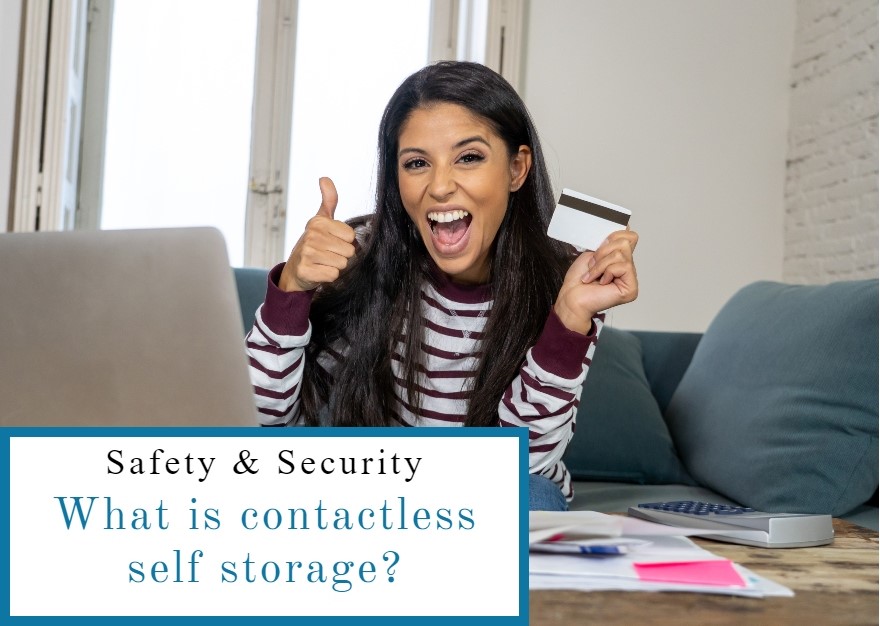
What is Contactless Self Storage?
Have you heard the words, “Contactless Self Storage” and wondered what it is and how does it work? Imagine renting a self storage unit from the comfort of your home or from your vehicle in the parking lot of the self storage facility! With the increased usage of the Internet and the ever growing popularity of online shopping, why not utilize both and make online self storage rentals that are easy to navigate and completely safe! Recently with the pandemic it became increasingly evident that contactless self storage rentals were not only needed but necessary to protect our tenants in Bangor, Brewer and Ellsworth, Maine!
How do you rent without any in person contact?
We offer a website that integrates with our in house rental software. This means our inventory is accurate and current prices are always displayed. The process is simple and easy to complete online. Three simple steps and you gain instant access to your self storage unit. There are several payment options available which offer further no contact during your tenancy. When it comes time to end your self storage rental we offer an online “Move Out” form or you can email the office of your intentions to vacate in the next ten days. From start to finish you never need to have contact with any staff unless you choose to subject yourself to their professional and courteous personalities!
How Does The Process Look Online?
Once you have accessed our website at www.BomarcSelfStorage.com choose the location nearest you be it Bangor, Maine, Brewer, Maine or our Ellsworth, Maine location. Search the inventory and choose the appropriate size. Not sure what size you need, use our Size Guide or Space Estimator tool to assist you. Once you choose a self storage unit that fits your need you can continue with the online process.
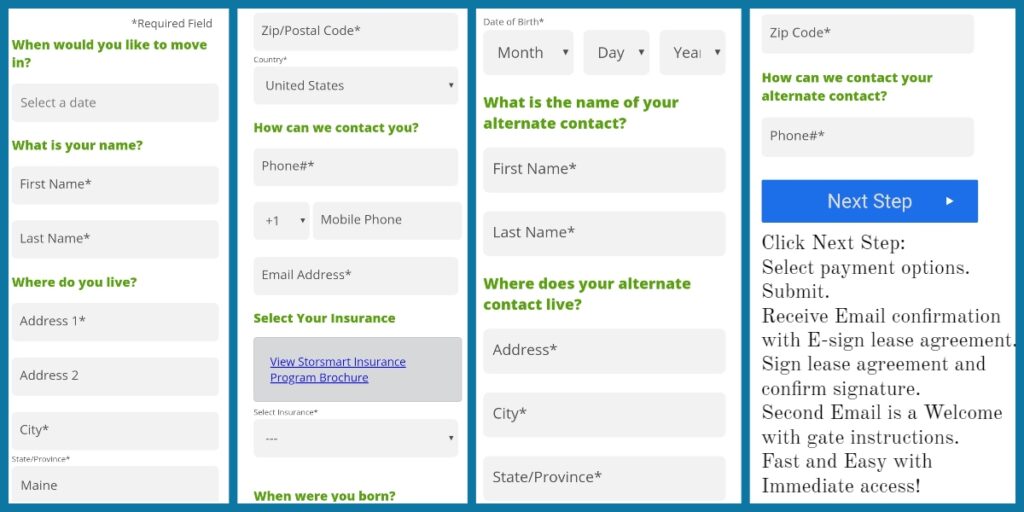
Fill in all the required information (Name, Address, phone number, Email and alternate contact.) We also offer self storage insurance if your homeowner’s or renter’s policy does not cover off site storage. Select the Next button and choose from our many payment options. Auto pay is our most popular option and available later if you decide to utilize this option in the future! Once completed you will receive an E-sign document with our lease agreement. Verify your information is correct, read the rules and regulations then E-sign the lease agreement. It has two required items and two optional items.
First required item is near the top. List of contents as required by law, (ie: Household, Vehicle, tools, building materials) Next are the two optional pieces and if they do not apply just scroll past. These are military or lien holder information on items in self storage please complete this section if you owe money on the items in storage.

Last required section is your signature agreeing to abide by the rules and regulations set forth in our lease agreement. Once the lease agreement is completed by confirming your signature, you will receive an email notification of the completion and giving you the unique code and procedure needed to access our facility. You now have instant access to your self storage unit.
Contactless begins here and can continue throughout the duration of your tenancy. Our staff is on hand to answer any questions via phone or email. During off hours the staff at our on call center will assist you. We diligently disinfect keypads, carts, doors and touch surfaces for your continued safety. Nearing the end of your tenancy? Easy, use our simple online “Move Out” form or email the office with your intended date of vacancy. Our aim is to provide an easy, safe and secure online rental process that protects you from unnecessary exposure from start to finish!.
Don’t Like Putting Your Information Online, But Still Want Contactless Self Storage?
We can assist you with a simple phone call to the location of your choice be it Bangor, ME, Brewer, ME or Ellsworth, ME! Provide us with the same basic information and we will happily rent you the perfect unit for your needs. We will also offer you the same great rates and contactless rental. As always, if you would like to experience our professional, friendly staff our office is open for you. Contactless Self Storage Rentals offer the best protection against exposure, plus are simple and secure!
Do I Need Self Storage Insurance in Bangor, Maine?
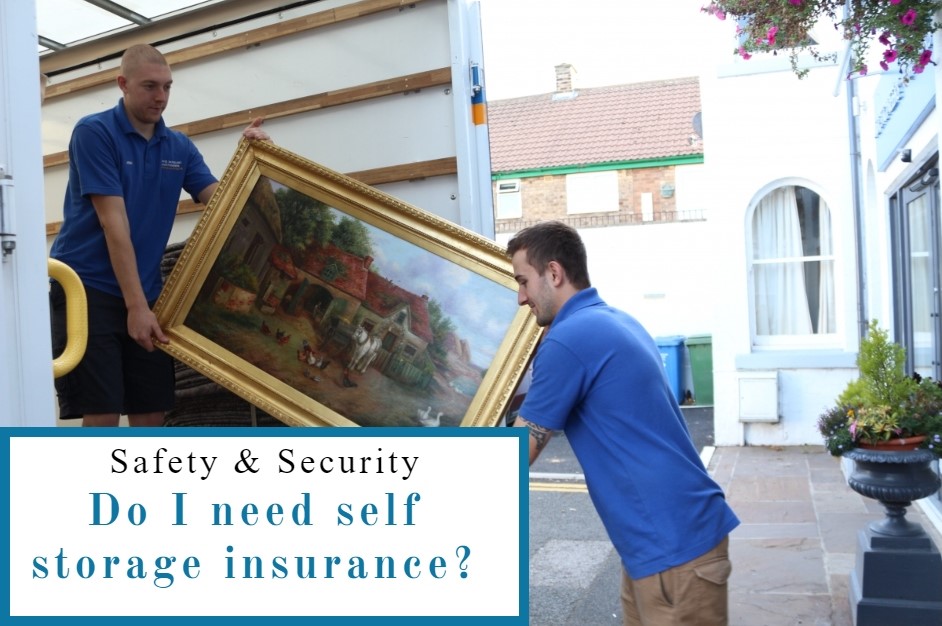
What is Self Storage Insurance?
Self storage insurance provides financial protection for your stored property especially in Bangor, Maine. It also gives you peace of mind knowing these items will be protected while being stored. Some homeowner’s and renter’s insurance policies will cover possessions stored off-premises and others do not. You can purchase extra insurance to cover property in self storage.
Why Do I Need Self Storage Insurance?
Your property is stored at your sole risk while it is in self storage. It is a common misconception that your self storage unit is covered by the storage facility. Most storage facilities do not insure your personal belongings and have no responsibility to provide insurance. Some locations may require you to have self storage insurance to store your property with them. That is why it’s important to check on insurance coverage for your property before you decide to store your items. Also, look for other security measures at the facility that will help protect your property such as security cameras, gated entry, outside lights and someone who is on premise during part of the day.
What to do if the storage facility requires insurance coverage to store your property with them. First, inquire about the type of proof they will accept that you have insurance coverage for self storage purposes. Ask; If you aren’t covered through your homeowner’s or renter’s insurance, do they offer their own insurance plan or do they have a recommendation for a good insurance company. Most places will require a copy of the “Declaration” page of your policy. A declaration page is an outline of the coverage your policy has including if that coverage extends to off-premise locations like self storage. This page can easily be obtained from your agent if you can’t find your copy to provide the proof of coverage needed.
The next step in seeking protection for your stored items is to contact your insurance company. Ask your agent if your policy protects items in self storage and if not is there an option to add this coverage to your policy. It may require an insurance rider to your current policy to provide you with the financial protection you will need for your property in storage. This rider can be dropped once you have removed your property from self storage.
If your policy covers off-premise storage ask your agent to direct you to the part of your policy that covers self storage insurance. Read every detail of that section to see what is covered and what isn’t. Many policies have exclusions of events like mold and mildew, flooding, hurricanes and earthquakes plus varying limits of coverage on qualified events. Every policy has different types of exclusions and varying limits depending on the company and policy type. If you have questions, ask your agent to clarify any words you don’t understand and how it will affect your property while in self storage. Being familiar with this coverage could save you a costly mistake while your property is being stored off-premise.
What if your policy doesn’t offer self storage insurance?
Ask the storage facility manager if they offer insurance coverage and what the different levels of protection are. Most reputable self storage facilities offer coverage for an additional cost above the monthly rent for your unit. These levels start at, or right around two thousand dollars coverage for roughly a ten dollar monthly premium. The plans go up by thousand dollar increments from there, some cap at ten thousand dollars coverage and other plans offer a higher limit. The manager can inform you of the different limits of coverage offered and the monthly premium for each level. As with most insurance policies there are exclusions of covered events and limits on coverage. Be sure to ask about these before making a decision. If they don’t offer an insurance plan ask for a recommendation for an agency that does offer self storage insurance.
Once you have all your options for self storage insurance, choose the one or ones that give you the best coverage for your property. Be aware that many policies will not cover items like, money, expensive jewelry or furs. If you have those items you may need to obtain “specialty insurance” to cover such items. Specialty insurance is used for items or events that are considered unique or have special circumstances around them. The property that would be covered with this type of policy is rarely covered by standard insurance. A safe deposit box may offer the best protection for these types of valuable items but be aware that most insurance companies do not cover items in safe deposit boxes. Sometimes a combination of policies will offer you the best protection for your property.
Added Protection Steps For The Security Of Your Property.
Once you’ve made a decision on a self storage facility there are other things you can do to help protect your property. Following are a few examples of the simple things you can do for added security and protection.
- Choose a disc or cylinder lock
- These provide a higher level of security compared to other locks
- Keep moisture sensitive items off the floor
- Pallets or selves should be used to elevate your items
- Cover your items with plastic sheets
- This will better protect your property from dust or moisture
- Do NOT store “Valuables”
- Jewelry, currency or other valuable items should not be stored in self storage
- Do NOT store flammable or hazardous materials
- Storing these items are dangerous to you and the facility
- Rodent or Pest control: check if Professional Pest Control is offered
- Add dryer sheets to clothing and in bureau drawers. Mice dislike the strong scent
- DO NOT put food items in your unit
- Make an inventory of your stored items and pictures of your more valuable items
- Keep a copy of your inventory in a safe place; it will help expedite any claim.
It’s up to you to decide the value of your property and to protect them while in self storage. Be a smart consumer and be prepared with self storage insurance!
Recent Comments